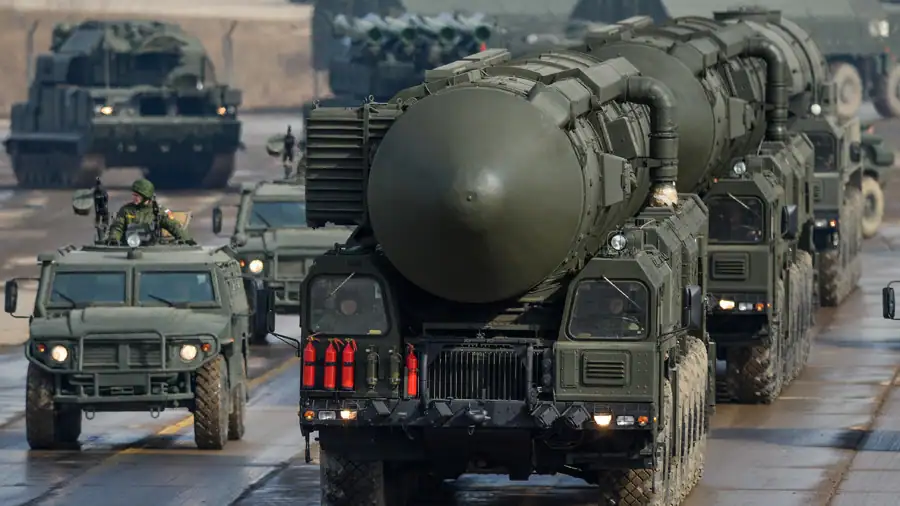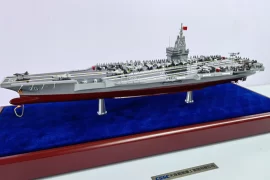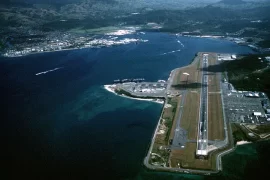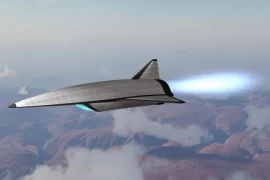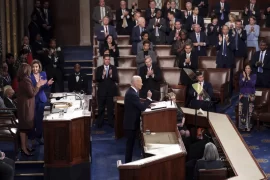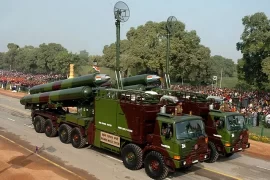In a significant development on February 21, 2023, Russian President Vladimir Putin announced that Russia would suspend its participation in the New Strategic Arms Reduction Treaty (New START). This treaty, which was signed in 2010, limited the number of strategic nuclear weapons that the United States and Russia could deploy, and it was set to expire in 2026. Putin’s decision has sparked concern among policymakers and experts around the world, as it raises the possibility of a renewed arms race between the two superpowers. It is well-known that Russia has been investing heavily in nuclear weapons and associated technology for several decades, and as one of the world’s superpowers, its nuclear capabilities play a crucial role in its military strength. Let’s take an in-depth look at Russia’s nuclear capabilities, examining its strategy for both deterrence and nuclear warfighting, and exploring the implications of its nuclear capabilities for global security.
Russia’s Nuclear History
Following the U.S. bombings of Hiroshima and Nagasaki in 1945, the Soviet Union dramatically accelerated its atomic weapons program, leading to the successful testing of its first plutonium bomb in 1949. This triggered an arms race between the United States and the Soviet Union, which resulted in a massive build-up of nuclear stockpiles and the development of even deadlier thermonuclear weapons.
However, the unprecedented nuclear testing and the Cuban Missile Crisis in 1962 sparked a global conversation about nuclear weapons, which led to a series of diplomatic discussions aimed at reducing the risk of catastrophe. The Soviet Union became a signatory to several treaties, including the Strategic Arms Limitation Talks (SALT) and the Anti-Ballistic Missile (ABM) Treaty.
Following the collapse of the Soviet Union in 1991, the newly sovereign states of Ukraine, Kazakhstan, and Belarus found themselves in possession of usable nuclear infrastructure and an estimated 3,200 nuclear warhead-equipped missiles. Diplomatic negotiations eventually led to these three countries giving up their nuclear arsenals in exchange for respect for their sovereignty and nuclear security protections.
Russia is now the world’s largest nuclear weapons state and a signatory to the Nuclear Non-Proliferation Treaty (NPT). The country has made significant progress in modernizing its Soviet-era nuclear weapons and delivery systems. Russia and the United States continue to operate under the obligations of the New Strategic Arms Reduction Treaty (New START), which puts limits on offensive strategic arsenals and ensures deeper transparency between the two states. The New START was signed in 2010. The treaty was extended for five years during the early days of the Biden administration and is set to expire in 2026.
After decades of arms control agreements between the United States and Russia, New START is the last remaining nuclear disarmament treaty between the world’s two biggest nuclear powers. The future of arms control between these countries remains uncertain.
Military Doctrine
Russia’s military doctrine classifies its nuclear weapons as a vital component of its national security strategy, and it reserves the right to use them in response to perceived threats, including conventional military attacks, cyberattacks, and threats to its sovereignty.
Russia emphasizes the importance of nuclear deterrence, which is based on the concept of mutually assured destruction (MAD), which means that both Russia and its potential adversaries possess enough nuclear weapons to destroy each other several times over. This creates a state of mutual vulnerability, which is intended to deter any potential aggressor from launching a nuclear attack. Russia’s nuclear forces are kept on high alert, and its missile launch procedures are designed to allow for a rapid response to any perceived attack.
In addition to MAD, Russia also employs a doctrine of “escalate to de-escalate.” This doctrine suggests that if Russia were to come under attack by conventional forces, it might use its nuclear weapons to de-escalate the conflict and force its adversaries to negotiate. This doctrine is controversial, and some experts believe that it raises the risk of nuclear war.
Russia’s Nuclear Arsenal
Russia’s nuclear arsenal is a topic of much speculation, with the exact number of weapons in its possession often difficult to determine.
According to the Stockholm International Peace Research Institute (SIPRI), Russia’s nuclear arsenal currently comprises approximately 4,490 nuclear warheads – the devices that trigger a nuclear explosion – including both strategic and tactical weapons.
The main difference between strategic weapons and tactical weapons lies in their purpose, range, and deployment. Strategic weapons are designed for long-range warfare against strategic targets and are usually launched from fixed or mobile platforms. Tactical weapons are designed for short-range combat against specific targets and are usually deployed by ground forces.
Federation of American Scientists estimated that Russia has 5,977 nuclear warheads though this includes about 1,500 that are retired and set to to be dismantled. Of the remaining 4,500 or so, most are considered strategic nuclear weapons claimed the American think tank.
Russia’s strategic nuclear weapons include a range of delivery systems, such as intercontinental ballistic missiles (ICBMs), submarine-launched ballistic missiles (SLBMs), and strategic bombers. These weapons are designed to strike targets at long distances, and they play a critical role in Russia’s nuclear deterrence strategy.
Russia possesses a variety of non-strategic or tactical nuclear weapons, including short-range ballistic missiles, gravity bombs, and landmines. These weapons are designed for use in more limited conflicts, such as a conventional military conflict on Russia’s borders.
Russia’s nuclear triad is made up of three delivery systems – air, land, and sea – which are all undergoing modernization. The air component includes strategic bombers such as the Tu-160, Tu-95, and Tu-22M, which can deliver nuclear bombs and cruise missiles. The land component consists of road-mobile intercontinental ballistic missiles (ICBMs) such as the Topol-M, Yars, and RS-24, as well as silo-based ICBMs such as the R-36M2 (SS-18 Satan). Finally, the sea component includes nuclear-powered ballistic missile submarines (SSBNs) such as the Borei-class and the Delta-class, which can launch nuclear missiles from beneath the surface of the ocean.
Russia’s modernization efforts are aimed at maintaining the effectiveness and reliability of its nuclear deterrence capabilities in the face of changing global security threats. The modernization program includes the development of new types of delivery systems, such as the Avangard hypersonic glide vehicle and the Poseidon nuclear-armed underwater drone. It also involves upgrades to existing systems, such as the replacement of older ICBMs with newer models and the retrofitting of older submarines with new missile systems.
Current deployment
According to the Norwegian Defense Ministry’s annual report, Fokus 2023, a significant portion of Russia’s nuclear arsenal is now deployed on surface ships and submarines belonging to the Northern Fleet. This marks a departure from past practices, as the last time nuclear-armed warships were seen departing from the Arctic port of Severomorsk was during the Cold War. The report notes that Russia’s reliance on nuclear weapons has grown as its conventional military capabilities have weakened.
Nuclear War-fighting Capability
Russia has been developing nuclear weapons that could be used in a limited or regional conflict, a concept known as “escalation dominance.” This includes low-yield nuclear weapons that could be used to counteract conventional forces and to create a “nuclear threshold” that could deter adversaries from using their own nuclear weapons. These weapons could also be used in a first-strike scenario, which some experts worry could lower the threshold for nuclear war.
Implications for Global Security
Russia’s nuclear capabilities have significant implications for global security. Russian authorities have repeatedly emphasized the possibility of using nuclear weapons as a last resort. President Vladimir Putin, for instance, has vowed (September, 2022) to defend annexed territories “with all means” available, while Dmitry Medvedev, the deputy head of the Security Council and a former president, has warned (January, 2023) that a conventional defeat of a nuclear power could lead to a nuclear war.
Putin’s announcement of suspending Russia’s participation in the New START treaty has only added to these concerns, as it raises the possibility of a renewed arms race between Russia and the United States.

